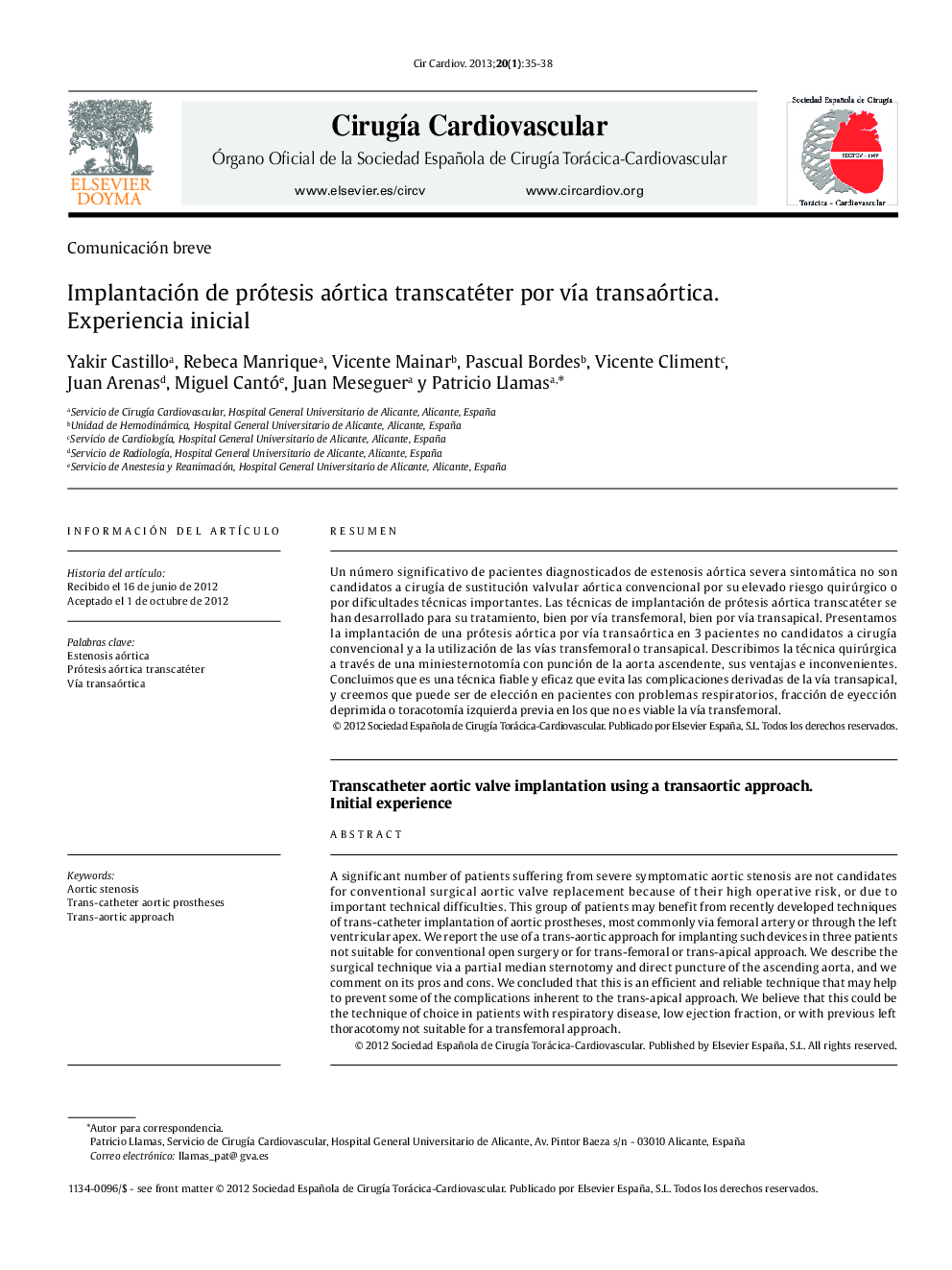| Article ID | Journal | Published Year | Pages | File Type |
|---|---|---|---|---|
| 2907627 | Cirugía Cardiovascular | 2013 | 4 Pages |
ResumenUn número significativo de pacientes diagnosticados de estenosis aórtica severa sintomática no son candidatos a cirugía de sustitución valvular aórtica convencional por su elevado riesgo quirúrgico o por dificultades técnicas importantes. Las técnicas de implantación de prótesis aórtica transcatéter se han desarrollado para su tratamiento, bien por vía transfemoral, bien por vía transapical. Presentamos la implantación de una prótesis aórtica por vía transaórtica en 3 pacientes no candidatos a cirugía convencional y a la utilización de las vías transfemoral o transapical. Describimos la técnica quirúrgica a través de una miniesternotomía con punción de la aorta ascendente, sus ventajas e inconvenientes. Concluimos que es una técnica fiable y eficaz que evita las complicaciones derivadas de la vía transapical, y creemos que puede ser de elección en pacientes con problemas respiratorios, fracción de eyección deprimida o toracotomía izquierda previa en los que no es viable la vía transfemoral.
A significant number of patients suffering from severe symptomatic aortic stenosis are not candidates for conventional surgical aortic valve replacement because of their high operative risk, or due to important technical difficulties. This group of patients may benefit from recently developed techniques of trans-catheter implantation of aortic prostheses, most commonly via femoral artery or through the left ventricular apex. We report the use of a trans-aortic approach for implanting such devices in three patients not suitable for conventional open surgery or for trans-femoral or trans-apical approach. We describe the surgical technique via a partial median sternotomy and direct puncture of the ascending aorta, and we comment on its pros and cons. We concluded that this is an efficient and reliable technique that may help to prevent some of the complications inherent to the trans-apical approach. We believe that this could be the technique of choice in patients with respiratory disease, low ejection fraction, or with previous left thoracotomy not suitable for a transfemoral approach.
